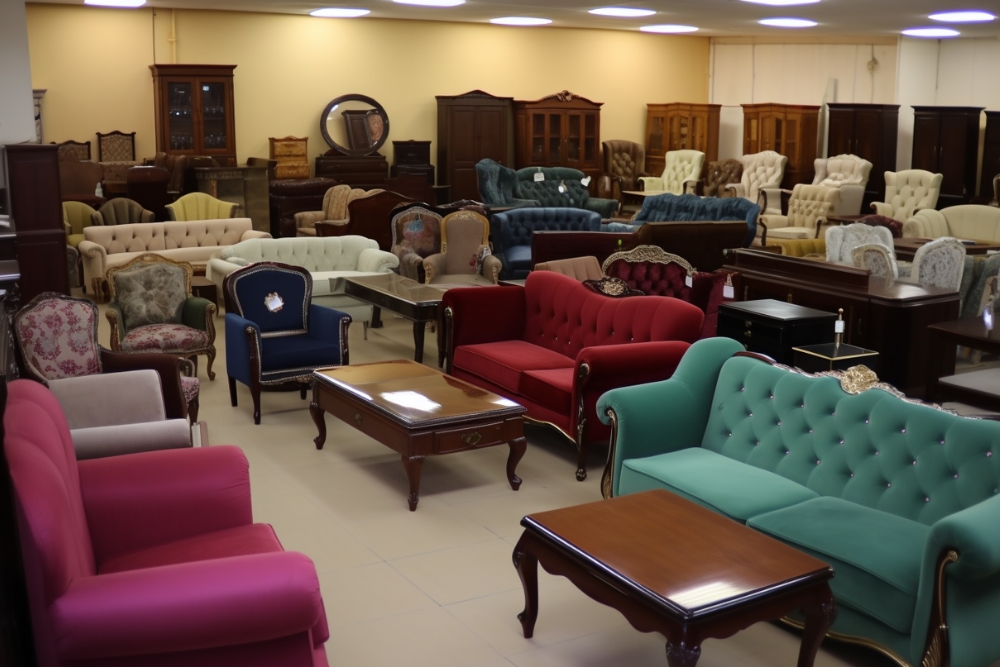Navigating the World of Used Furniture: A Comprehensive Guide
Used furniture offers a sustainable and cost-effective way to furnish homes and offices. This article explores the diverse world of pre-owned furnishings, providing insights on types, styles, materials, and how to make informed purchasing decisions. Used furniture comes in a wide variety of types suitable for both residential and commercial spaces. For homes, common items include sofas, dining tables, chairs, bedroom sets, dressers, and bookshelves. Office environments often feature used desks, ergonomic chairs, filing cabinets, conference tables, and reception area furniture. Vintage and antique pieces can add character to both settings, while modern pre-owned furniture offers contemporary style at a fraction of the cost of buying new.

How do styles and materials vary in the used furniture market?
The used furniture market encompasses a broad range of styles and materials. Traditional wood furniture, such as oak, mahogany, or pine, remains popular for its durability and timeless appeal. Modern styles often incorporate materials like metal, glass, and engineered wood products. Upholstered furniture can be found in various fabrics, from leather to synthetics. Mid-century modern pieces have seen a resurgence in popularity, while industrial-style furniture adds a unique flair to many spaces. When comparing styles and materials, consider the existing decor of your space and the durability required for your intended use.
What factors should be considered when buying used furniture?
When purchasing used furniture, several factors come into play. First, consider the item’s condition, including any wear, tear, or damage. Assess the furniture’s functionality – does it serve its intended purpose effectively? Size and dimensions are crucial, especially in smaller spaces. The furniture’s style should complement your existing decor or the overall aesthetic you’re aiming for. Price is another key consideration; while used furniture is generally more affordable than new, prices can vary widely based on condition, brand, and rarity. Lastly, think about the ease of transportation and whether the seller offers delivery options.
How can one inspect used furniture for quality and durability?
Inspecting used furniture for quality and durability is essential to ensure a worthwhile purchase. Start by examining the overall structure for stability and sturdiness. Check for any wobbling, loose joints, or signs of repair. For wooden furniture, look for solid construction techniques like dovetail joints and be wary of excessive scratches, dents, or water damage. With upholstered pieces, inspect the fabric for tears, stains, or odors, and test the cushions for firmness and shape retention. Drawers and doors should open and close smoothly. For metal furniture, check for rust or corrosion. Don’t hesitate to ask the seller about the furniture’s history, including any repairs or refinishing work.
What are some unique insights about the used furniture market?
The used furniture market has evolved significantly in recent years, driven by sustainability trends and online marketplaces. Upcycling and repurposing old furniture have become popular DIY projects, giving new life to vintage pieces. Some cities have seen the emergence of “furniture districts” where multiple secondhand stores cluster, creating a one-stop shopping experience for used furnishings. Additionally, there’s a growing market for high-end, gently used designer furniture, offering luxury pieces at more accessible price points. Some innovative companies now offer rental options for quality used furniture, catering to temporary living situations or those who like to change their decor frequently.
Where can one find reputable used furniture sellers?
Finding reputable used furniture sellers is crucial for a positive buying experience. Here’s a comparison of some popular options:
| Seller Type | Pros | Cons | Best For |
|---|---|---|---|
| Thrift Stores | Low prices, unexpected finds | Variable quality, limited selection | Budget-conscious buyers, DIY enthusiasts |
| Consignment Shops | Curated selection, better quality | Higher prices than thrift stores | Those seeking quality pieces at a discount |
| Online Marketplaces (e.g., Facebook Marketplace, Craigslist) | Wide selection, direct from owners | Potential scams, quality varies | Tech-savvy buyers comfortable with online transactions |
| Antique Shops | Unique, high-quality pieces | Higher prices, specialized market | Collectors, those seeking specific styles or periods |
| Estate Sales | Potential for valuable finds, complete sets | Time-sensitive, can be competitive | Serious collectors, those furnishing entire rooms |
Prices, rates, or cost estimates mentioned in this article are based on the latest available information but may change over time. Independent research is advised before making financial decisions.
When choosing a seller, consider factors such as reputation, return policies, and whether they offer delivery or pickup options. Reading reviews and asking for detailed photos and descriptions can help ensure a satisfactory purchase in the dynamic world of used furniture.




